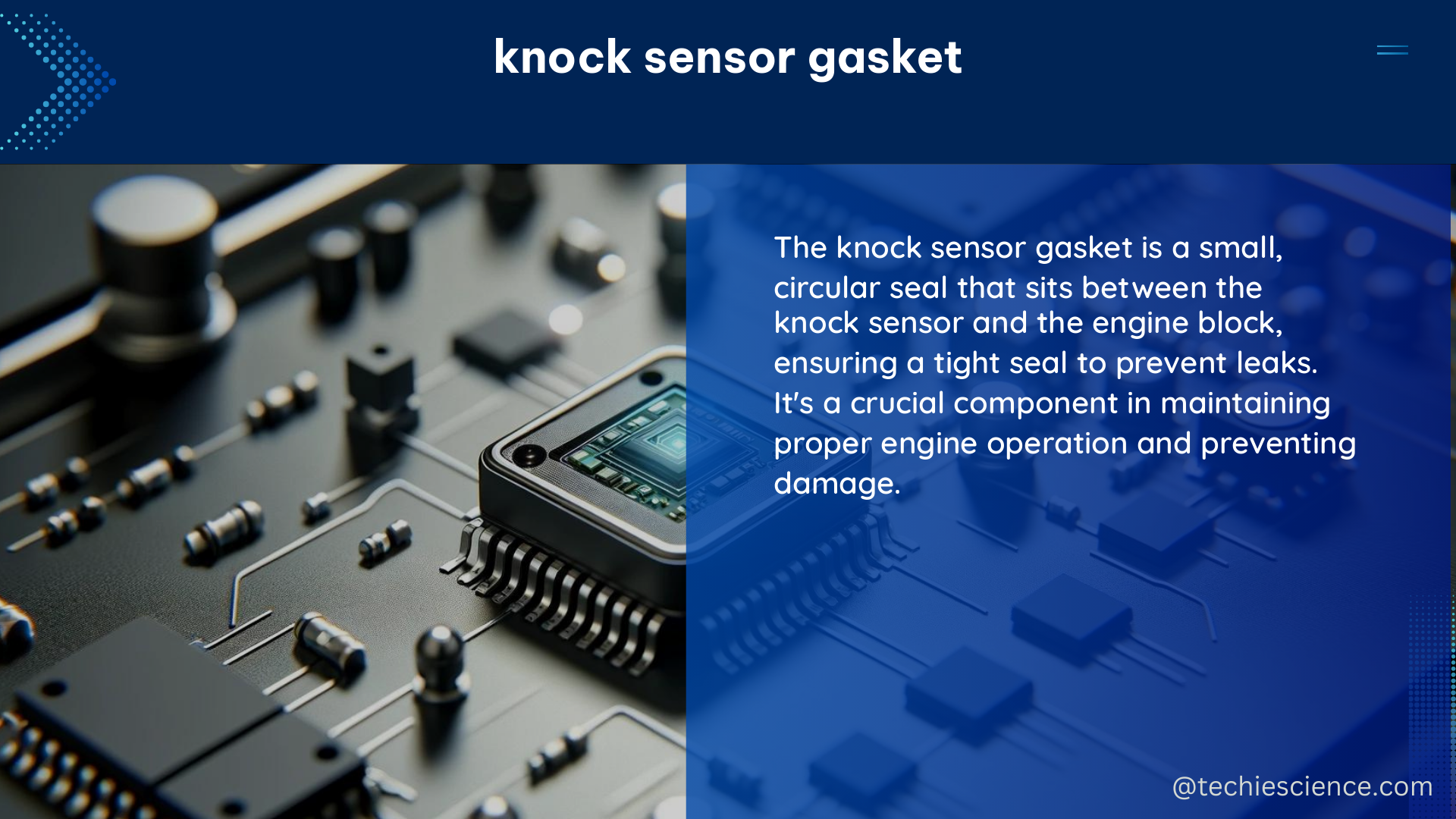The knock sensor gasket plays a crucial role in ensuring the proper functioning of the knock sensor, which is responsible for detecting engine knocking or detonation. This sensor identifies high-frequency engine vibrations caused by knocking and transmits a signal to the Engine Control Unit (ECU) to adjust ignition timing and prevent engine damage.
Understanding the Importance of Knock Sensor Gaskets
Knock sensor gaskets are designed to operate safely and reliably even at high temperatures, up to 160°C, and withstand at least 1,000 temperature cycles. The gasket ensures a proper seal between the knock sensor and the engine block, preventing leakage of engine oil or coolant into the sensor and maintaining the sensor’s accuracy and durability.
Knock Sensor Gasket Specifications and Requirements

To ensure optimal performance, knock sensor gaskets must meet the following specifications and requirements:
- Temperature Resistance: The gasket must be able to withstand temperatures up to 160°C (320°F) without degradation or failure.
- Thermal Cycling Durability: The gasket must be able to withstand at least 1,000 temperature cycles without compromising its sealing properties.
- Material Composition: The gasket is typically made from high-quality materials, such as silicone or specialized elastomers, to provide a durable and reliable seal.
- Dimensional Accuracy: The gasket must be precisely manufactured to fit the specific knock sensor and engine block interface, ensuring a tight and secure seal.
- Chemical Resistance: The gasket must be resistant to engine oils, coolants, and other fluids that it may come into contact with during operation.
Common Issues with Knock Sensor Gaskets
In some cases, issues with knock sensor codes may arise due to faulty wiring harnesses or damaged pins on the Powertrain Control Module (PCM). It is essential to ensure that the wiring harness is securely connected and in good condition, and that the PCM pins are not damaged or corroded. If the PCM is damaged, it may be necessary to replace it with a new or reflashed unit.
Knock Sensor Replacement and Installation
When replacing knock sensors, it is recommended to use high-quality Original Equipment Manufacturer (OEM) sensors and short harnesses to ensure proper functionality and longevity. Additionally, the following steps can help prevent water intrusion and potential damage to the sensors or PCM:
- Cleaning and Drying: Thoroughly clean and dry the engine compartment, particularly the back port where the knock sensor is installed.
- Circular Dams: Apply circular dams of silicone around the knock sensor mounting area to create a barrier against water intrusion.
- Harness Routing: Ensure that the knock sensor wiring harness is routed and secured properly to avoid any potential damage or interference.
Maintaining Knock Sensor Gasket Integrity
To maintain the integrity of the knock sensor gasket, it is essential to follow the manufacturer’s recommended replacement intervals. Depending on the vehicle and operating conditions, the knock sensor gasket may need to be replaced every 50,000 to 100,000 miles (80,000 to 160,000 km) or during major engine service intervals.
Conclusion
Knock sensor gaskets play a critical role in the proper functioning of the knock sensor, which is essential for preventing engine damage caused by knocking or detonation. By understanding the specifications, common issues, and proper installation and maintenance procedures, you can ensure the longevity and performance of your engine’s knock sensor system.
References:
- Knock Sensor Values
- Knock Sensor Troubleshooting
- Knock Sensor Code Diagnosis
- Knock Sensor Diagnostics
- Bosch Knock Sensor Technology

The lambdageeks.com Core SME Team is a group of experienced subject matter experts from diverse scientific and technical fields including Physics, Chemistry, Technology,Electronics & Electrical Engineering, Automotive, Mechanical Engineering. Our team collaborates to create high-quality, well-researched articles on a wide range of science and technology topics for the lambdageeks.com website.
All Our Senior SME are having more than 7 Years of experience in the respective fields . They are either Working Industry Professionals or assocaited With different Universities. Refer Our Authors Page to get to know About our Core SMEs.